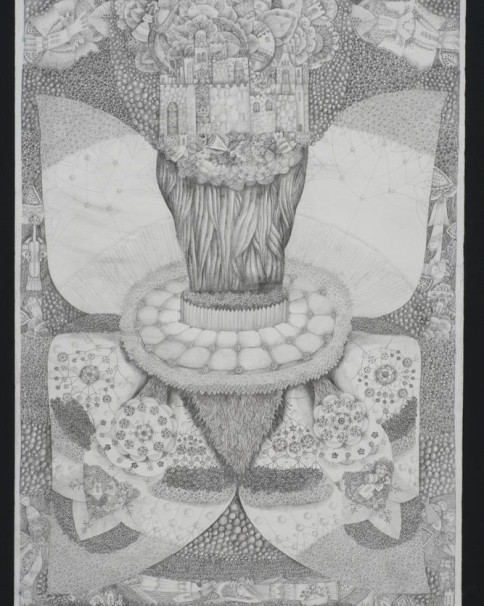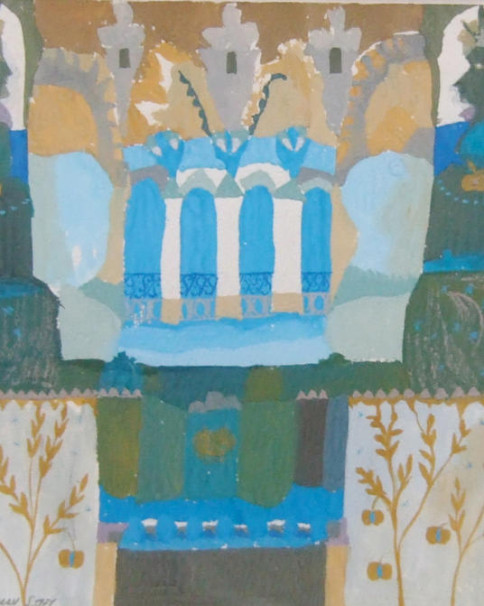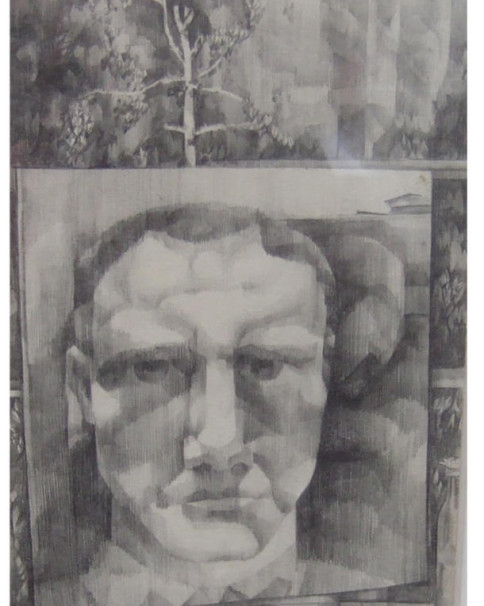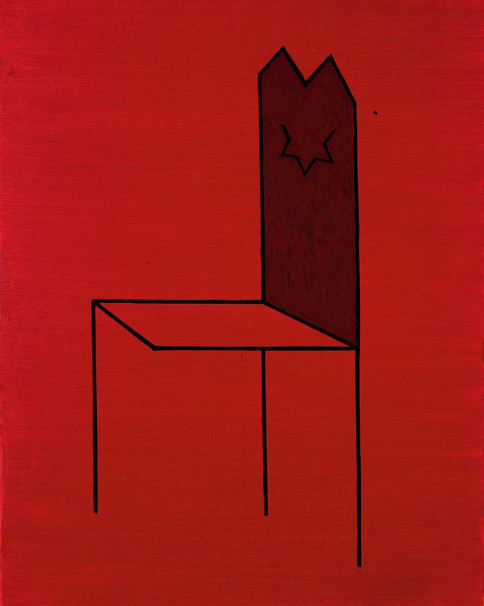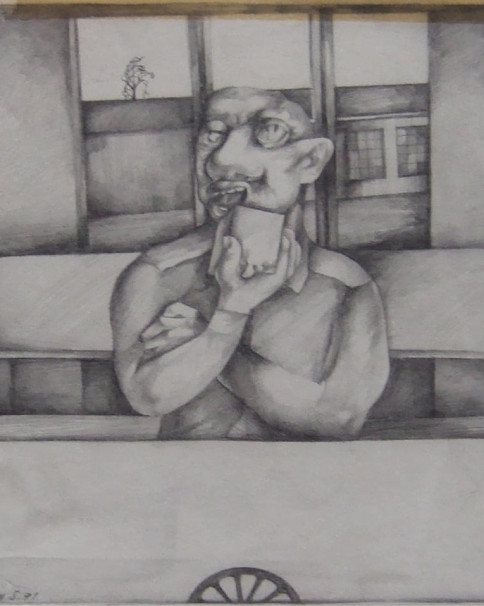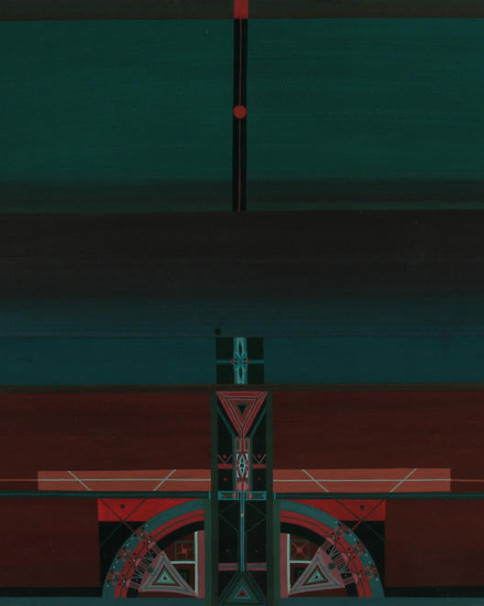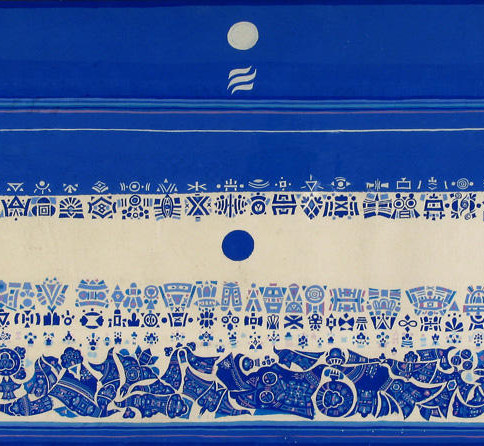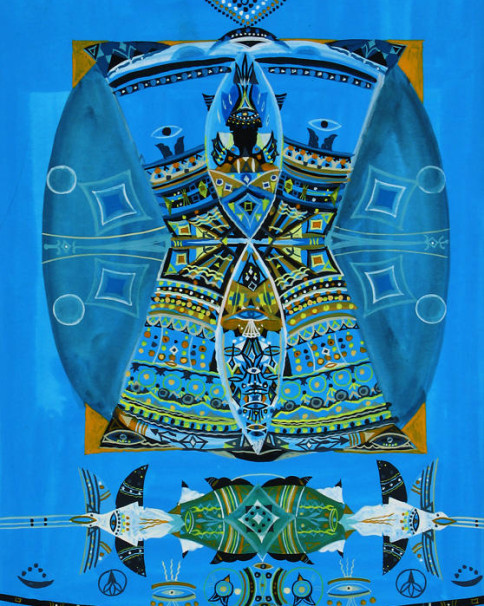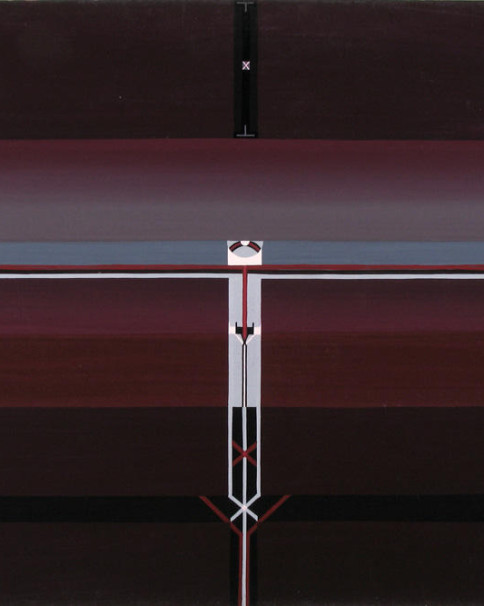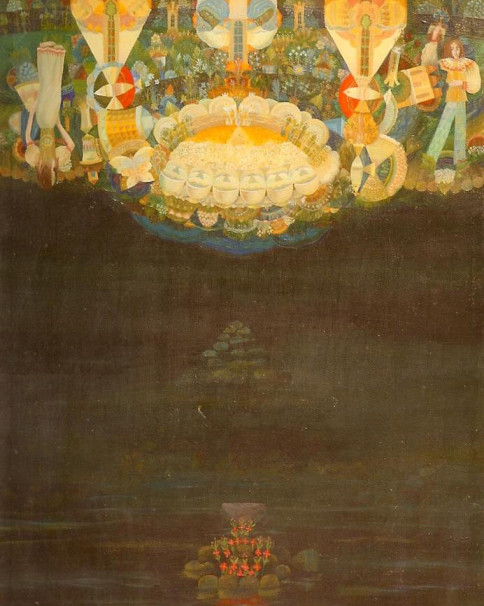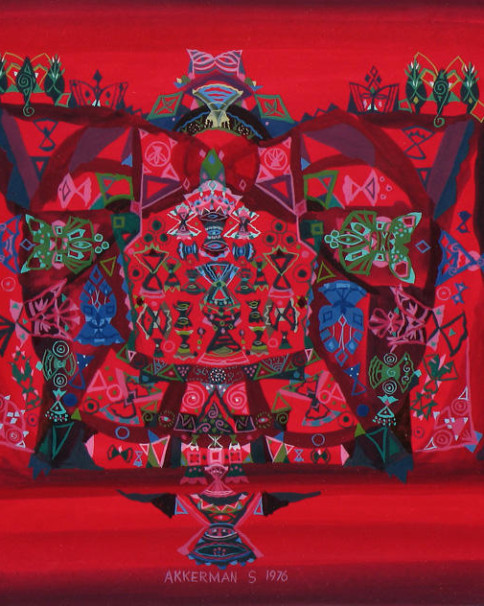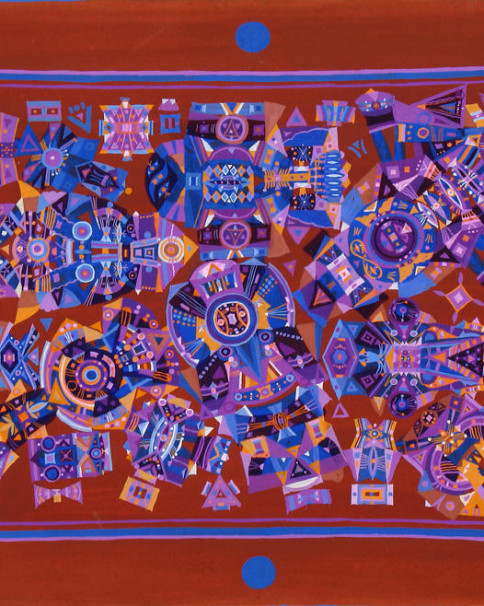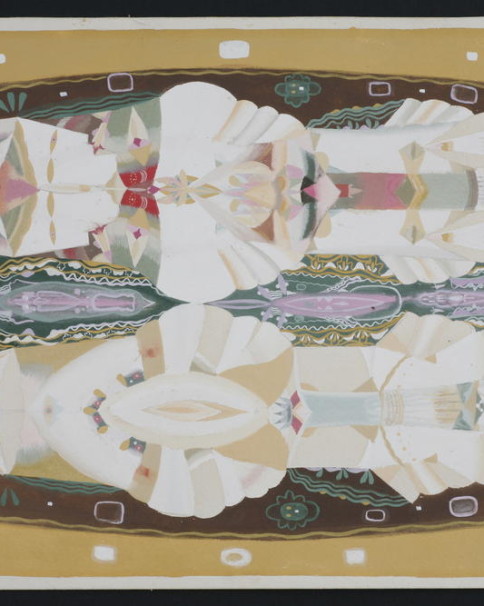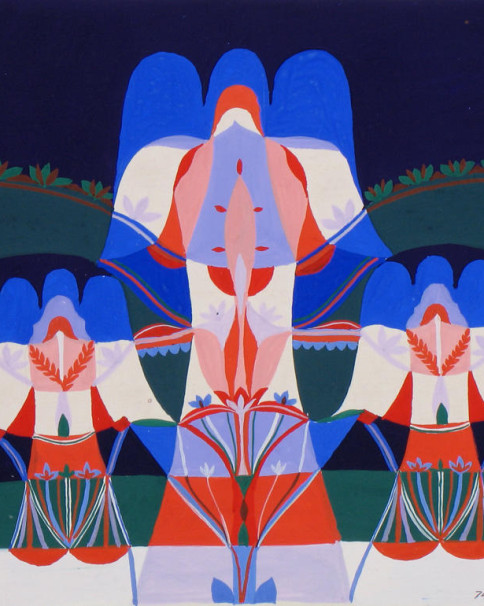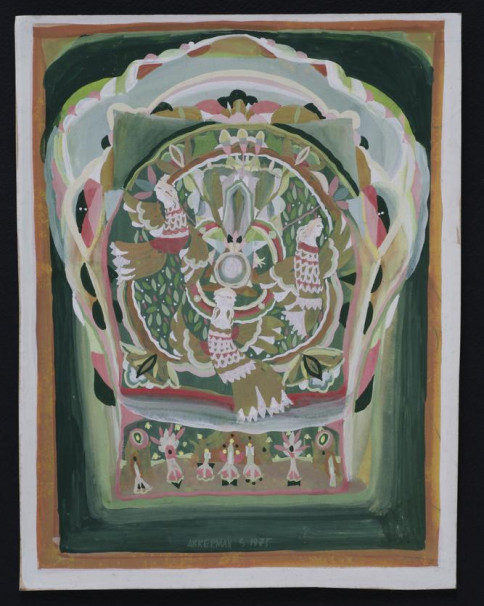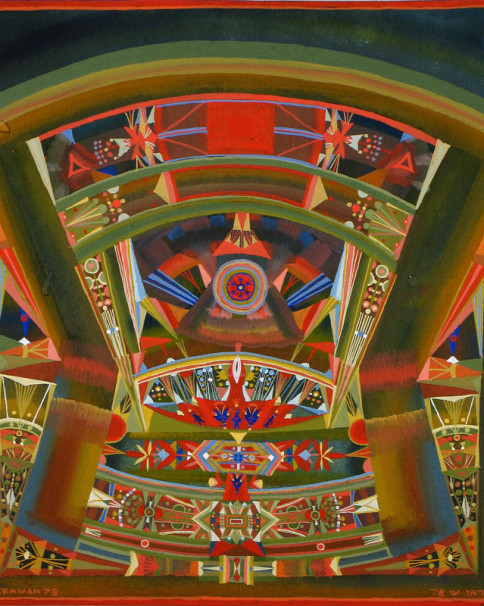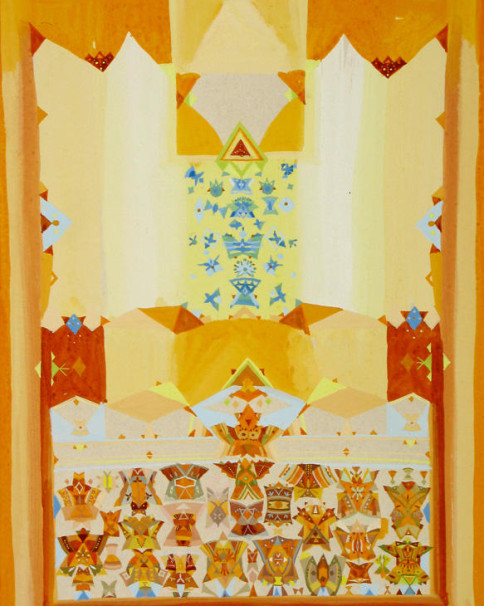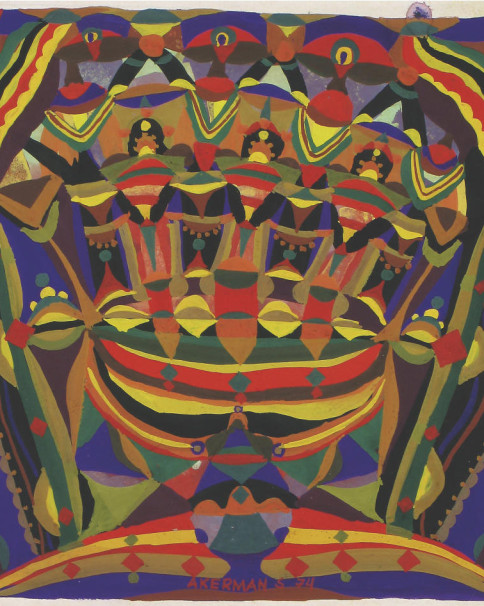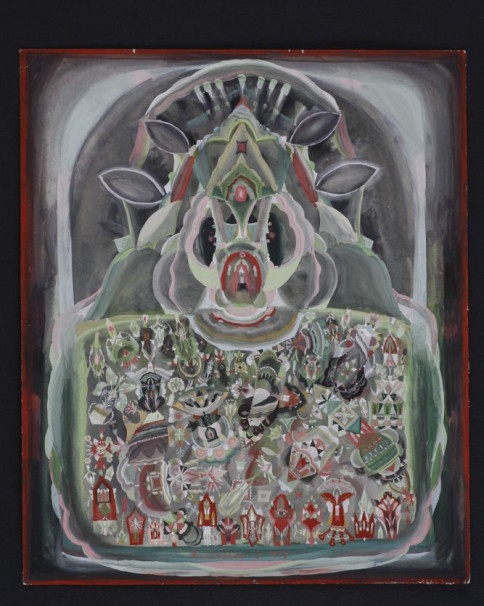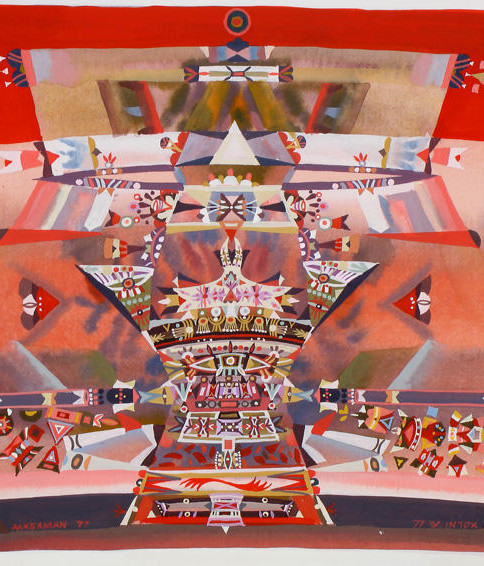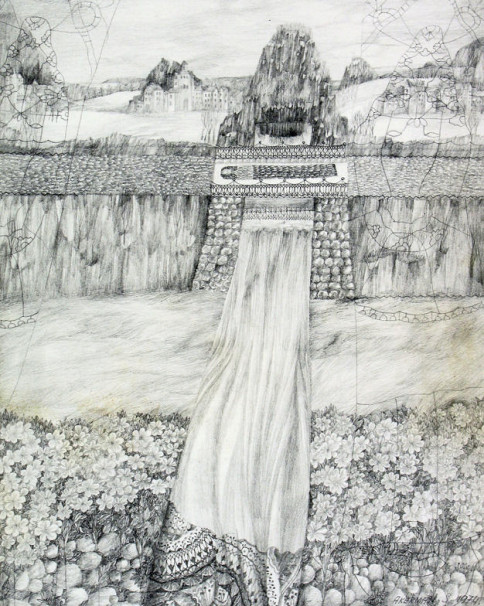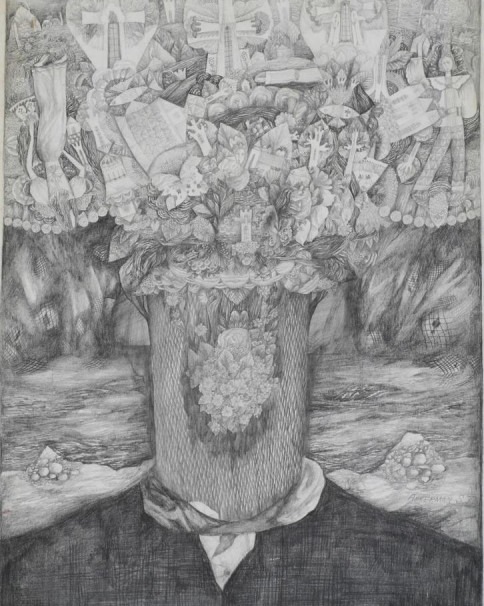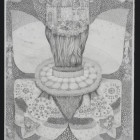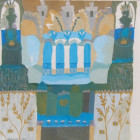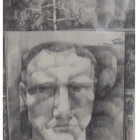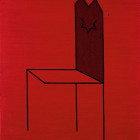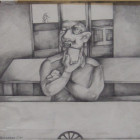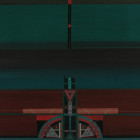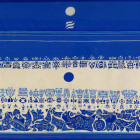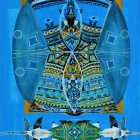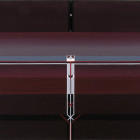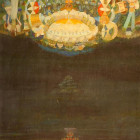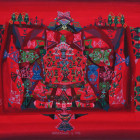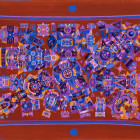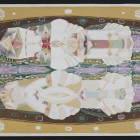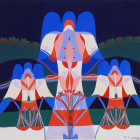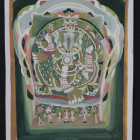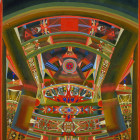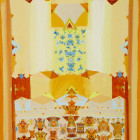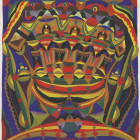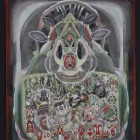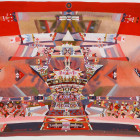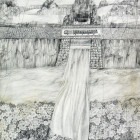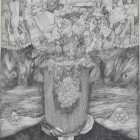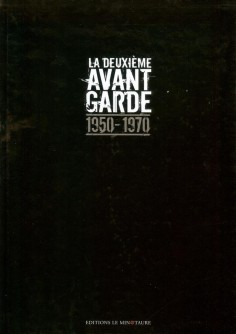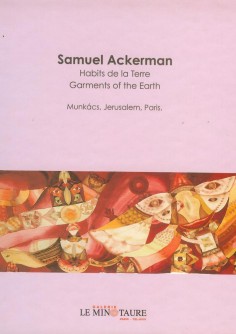Born in 1951 in Mukachevo (Ukraine), on the border between Slovakia and Hungary, into a family of Holocaust survivors, Samuel Ackerman graduated from the Academy of Monumental Art in Uzhgorod, a place open to Western culture. Among his youthful influences are the customs of the Roma and Hutsuls, a mountainous people sung by Sergei Parajanov, the Jewish traditions of Central Europe, and Ukrainian folk art.
After completing his military service as a painter and creating a museum for his division, he worked at the Mukachevo Drama Theatre as a set designer. At the age of 22, he emigrated to Israel with his parents and brother.
In 1976, with Mikhail Grobman and Avraham Ofek, he founded the Leviathan group. This group aimed to establish a new Israeli avant-garde, expressing an Israeli Jewish existential identity through Jewish mysticism and the connection with the land of Israel, while allowing each member to find their own formal translation.
In 1984, he moved to Paris with his wife and daughter. His second daughter was born in Paris. The Parisian period gave him the opportunity to reconsider several of his formative influences, such as Russian avant-garde, particularly Malevitch and Khlebnikov, while immersing himself in the world of Dada and the École de Paris. The poetry of Paul Celan inspires him to create works imbued with tragedy, as well as more recent disasters such as the Notre-Dame fire and the war in Ukraine.
Samuel Ackerman has been exhibiting since 1970 in Ukraine, Israel, Switzerland, Germany, Russia, Hungary, France, the Netherlands, and Belgium. His works are included in collections at institutions such as the Israel Museum (Jerusalem), Haifa Museum, National Museum of Ukraine (Kiev), and Shevchenko Museum (Kiev).
Personal exhibitions
1976 – Galerie Alexandrowicz, Tel-Aviv, Israël
1983 – “The Hive of Scrolls”, The Artist House, Jérusalem, Israël
1984 – “Parable of Ties”, Galerie Loeb, Berne, Suisse
1986 – “Entelechie”, Galerie Jean-Claude Marcadé, Paris, France
1989 – “Pictural organisms”, Galerie Anita Farber, Wiesbaden, Allemagne
1991 – Bibliothèque Nationale des Langues Étrangères, Moscou, Russie
1992 – “The roots of Time”, Bibliothèque Nationale de Russie, Saint-Pétersbourg, Russie
1995 – Musée Nationale de l’Art Ukrainien, Kiev, Ukraine
2000 – “Shadow of Ashes”, Contemporary Art Center, Kiev, Ukraine
2000 – “Meridian of Heart. In memoriam of Paul Celan”, Le Musée de l’Art Ukrainien, Czernowitz, Ukraine
2005 – “Ombres éveillées”, Galerie Art et Littérature, Paris, France
2008 – “Les Habits de la Terre”, Galerie Le Minotaure, Paris, France
2018 – “Le Blanc pur”, Art 14 Gallery, Kiev, Ukraine
2022 – “La Cène de Kazimir”, Galerie Le Minotaure, Paris, France
Group exhibitions
1986 – Salon des Beaux-Arts, Le Grand Palais, Paris, France
1990 – “Chagall to Kitaj”, Barbican Art Center, Londres, Angleterre
1993 – “Trois artistes”, ARECI, La Rochelle, France
2005 – “Artistes russes non-conformistes aujourd’hui”, Château-musée Grimaldi, Cagnes-sur-Mer, France
2008 – “Volonté de l’immense”, Musée de l’Art Russe, Kiev, Ukraine
2009 – “Phase Zéro. 96 propositions spatiales”, Galerie Serge Aboukrat, Paris, France
2012 – “Inspired by Velimir. Khlebnikov and the contemporary art.” State Public Library of the Don region, Rostov-sur-le-Don, Russie
